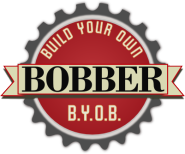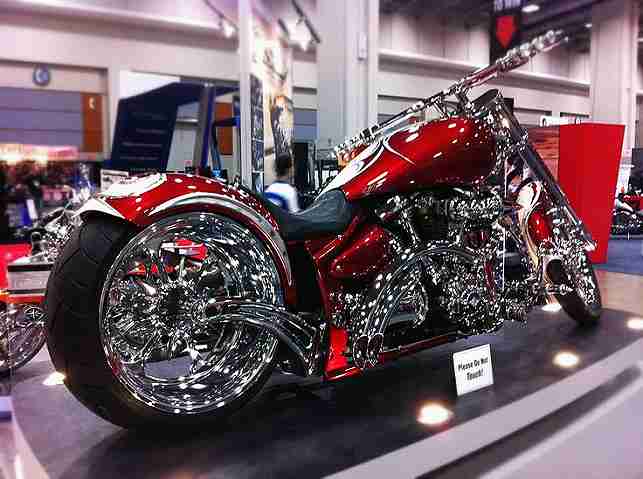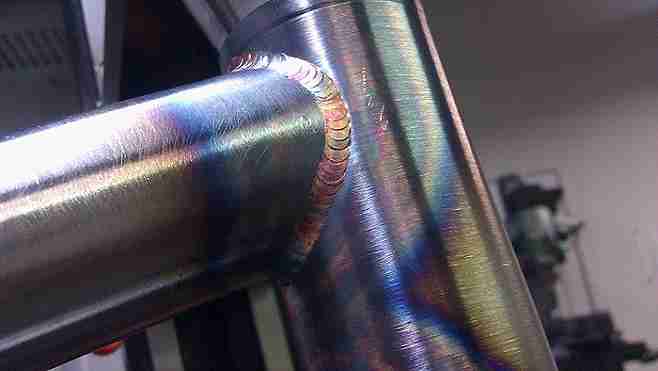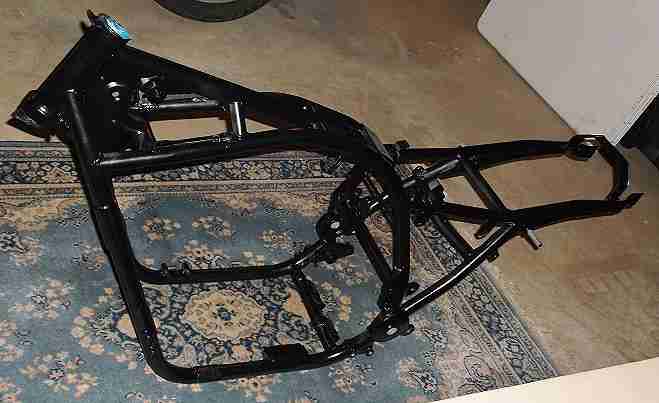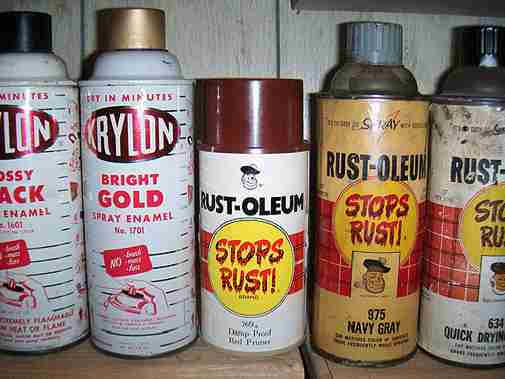One good thing about working with an old bike is that, unless it’s a concourse restoration or something along those lines, certain blemishes are okay.
Today, there are more bike builders walking this planet than ever before. The market is richer (yeah…) than ever and some of those folks want a work of art in their garage. Take for instance, welded joints. On some works of art, they are ground smooth. The joint is barely noticeable. The fit and finish are flawless. Perfect!
The thing is that old motorcycles have welded joints. The welded joints look like welded joints. They aren’t smooth like a baby’s bottom. In other words, the real perfection of the weld isn’t ground off and made smooth.
So where am I going with this? Well, the GS850’s frame is rust-free and it’s painted. The thing was media blasted, primed and painted outdoors in March. Now while I wouldn’t do the fuel tank or side covers outdoors (…any more, and not that I haven’t done it before), it’s was okay to lay on the paint for the frame with a slight breeze to my back.
Some runs or drips really aren’t a major cause for concern. The frame actually has lots of unsightly blemishes that are fresh from the factory. On this bike, nobody is going to see the runs or the drips. Nobody—including me—is going to care either.
The frame looks good. It looks just like a 1981 Suzuki GS850 should look, warts and welds and all. Most important though is that there’s no rust.
The frame was primered and painted before any flash rust could start. The frame was painted with VHT Roll Bar & Chassis Paint. It dries fast and wears well from what I’ve read.
The spraying action on the can of paint isn’t great. Turning the can upside down or too far on its side causes that pppffttt sound when no paint exits the nozzle. Basically, it’s an old fashioned can of paint rather than the technologically improved can from NASA allowing the user to paint upside down with no ill effects. In other words, it’s a lot like the bike for which it serves…and the current owner…blemishes and all. Big deal.
Next: Removing old gasket material
